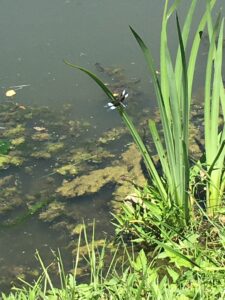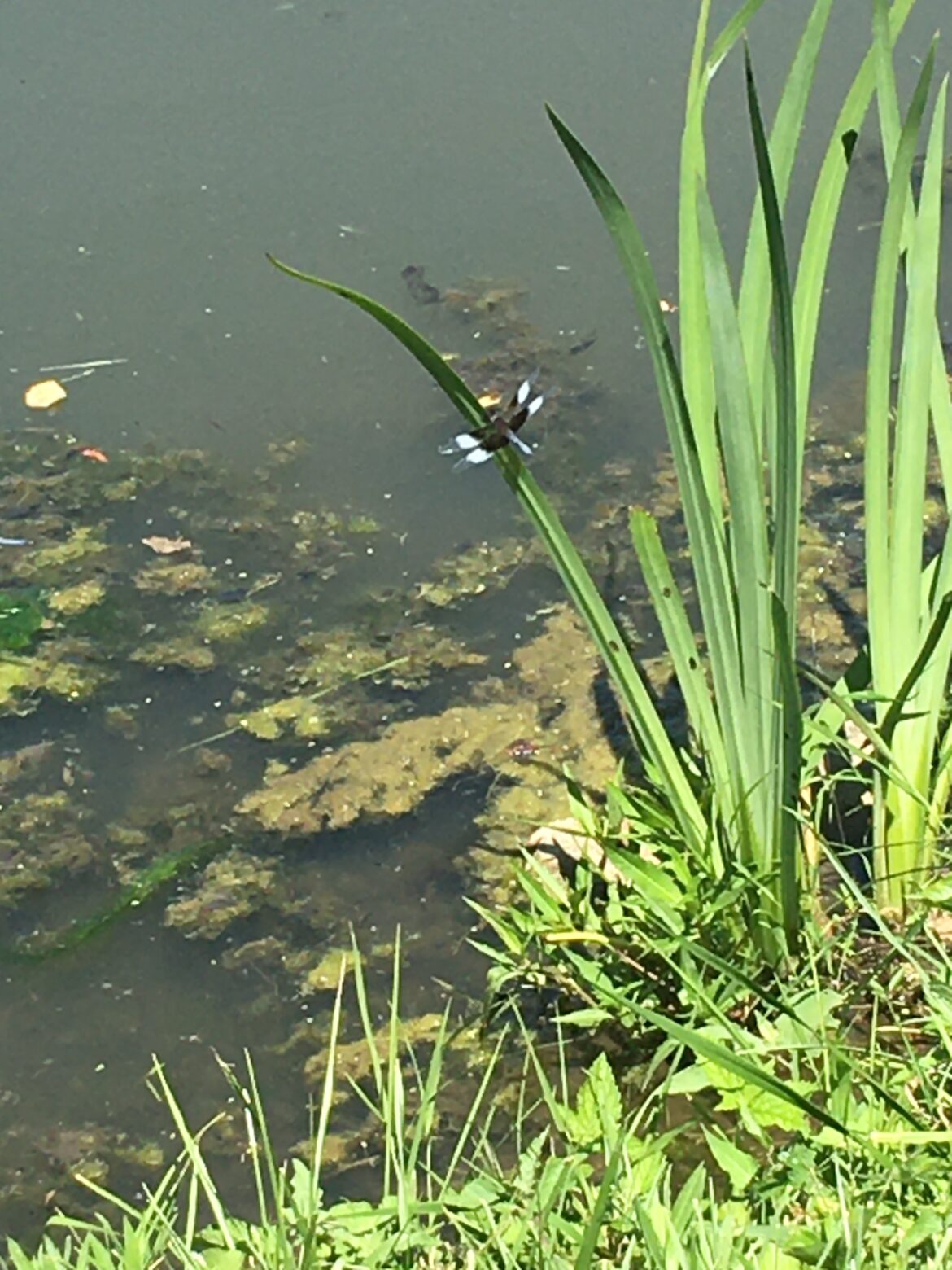June 30th
The 181st Day of the Year
It will not always be summer; build barns.
Hesiod
Do not let a flaunting woman coax and cozen and deceive you: She is after your barn.
Hesiod
Sunrise/set: 5:09/8:08
Day’s Length: 14 hours 59 minutes
Average High/Low: 84/63
Average Temperature: 74
Record High: 98 – 1913
Record Low: 46 – 1943
Weather
Statistically, this is the coolest day of Deep Summer, recording a 50 percent chance of a high only in the 70s in my weather history. The last time such odds occurred was June 4th. September 3rd will be the next time the chances return to 50 percent. Highs in the 80s occur 35 percent of the time, 90s fifteen percent. Chances of rain are good: 40 percent of June 30s bring a thunderstorm.
Natural Calendar
June’s berries are disappearing: black raspberries and strawberries decline quickly in warmer years; the best mulberries have fallen. July’s wild cherries ripen, and elderberries set fruit. Thistledown lies across the pastures in windless afternoons, cottonwood cotton along the streets. The oats matures and the first tier of soybeans blooms in average summers. Maroon seedpods have formed on the locusts. Some green-hulled walnuts are already on the ground. The earliest cicadas chant. This year’s ducklings and goslings are nearly full grown. Trumpet vine flowers fall in the midsummer rains.
Daybook
1983: All the strawberries gone now in our patch.
1985: South Glen: Enchanter’s nightshade full bloom, some avens fading, scattered daisies, thimbleweed flower a few days old, galls on some goldenrod, wood mint open maybe a week, wild lettuce budding, privet seeding, pale touch-me-nots in bloom, ironweed with small tight heads, white snakeroot – two plants budding, first lopseed flowering, some angelica left.
1987: Katydid seen today, not heard tonight.
1990: To Falling Water, Pennsylvania: More bright, orange butterfly weed flowering, more parsnips gone to seed (maybe half of them now), and most hemlock brown. Clovers and black-eyed Susans still strong, teasel taller but still green, elderberries more than half with fruit set. First tall sundrops (Oenothera fruticosa) noticed, cattails fully out in places, some catalpa flowers still holding in the Pennsylvania mountains, weeks later than in Yellow Springs. Back at home, lightning bugs are as thick as they’ve been for years.
1991: Yucca gone now, catalpa beans long, first red garden phlox.
1992: Cosmos and zinnias are in early full bloom. Gay feather budding, lilies early full, mallow full, yellow yarrow just becoming bright. Full yellow squash harvest, a few peas left, a few tomatoes golf-ball size. Corn still low, no tassels, sweet corn will be late, too. Today is the peak of black raspberries in the yard, the last days for cherries and rhubarb. A large number of raccoons, young and old, were killed on the highways this past week, just prior to the worst heat and humidity of the summer.
1993: First Japanese beetles found in the roses, have probably been out a couple days. Sundrops mostly gone now.
1998: At the orchard, the first peaches have started coming in, and the first of the summer apples. Rugosa roses are gone along Dayton-Yellow Springs Road.
1999: First rose of Sharon blooms.
2000: Home to Yellow Springs after 13 days away: The north garden lush with full orange and yellow daylilies and Asiatics, violet mallow, bright yellow and orange, Shasta daisies, achillea, drooping white cones of goosefoot, tall hollyhocks, ironweed full size and budded. The roses are mostly gone, but only two Japanese beetles found.
Under the apple tree, the mid-season hostas are open, most of the astilbe rusted. In the south garden, last year’s snapdragons and bachelor’s buttons have finally died back, but the orange perennial gladiolas are open beside the yellow yarrow. Daisies and lamb’s ear all gone, and most flax and spiderwort, leaving that far south garden pretty bare. In the pond, purple loosestrife is in bloom, water willow done, the whole pond overgrown with weeds and flowers, needing a full thinning. The fish are doing well, even after two weeks without their waterfall.
2001: Young raccoons continue to be struck along the highway. First yellow coneflower opens at the south wall. Mid-season hosta well underway.
2002: The beach at Tillamook, Oregon: Blackberries and salmon berries in full bloom. Foxglove-like fireweed in mid to late bloom.
2003: First Japanese beetles found in the roses. Lilies coming in strong now. A few peach-leafed bellflowers still in bloom. Yellow primrose declining quickly.
2004: At 4:00 a.m., silence outside; at 4:05 the first distant robin chatter; by 4:30, the cardinals come in, doves by 4:45. In the north garden, the first Shasta daisy opened.
2007: Cardinals and doves strong this morning by 4:30. Sun and cool after days of humidity and storms. The lilies are really coming in now, red monarda full, violet monarda close to full, purple coneflowers filling in the east side of the north wall garden with color, mid-season hostas budded and some are coming in. The first rose of Sharon bloomed a few days ago (one flower only) and has faded now. Zinnias in the east garden have put out six or seven blossoms. One blue bellflower has opened near the geraniums. One rudbeckia has opened at Don’s yard. First cicada heard at about noon.
2009: The coolest morning in weeks. Robins were singing at 4:00, and then doves at 4:30, red-bellied woodpecker calling, but no cardinals heard at all. Young grackles in the back bushes, and clucking and cackling in the high trees this afternoon. A monarch butterfly, the first we’ve seen this year, visited the garden. The Stella d’oro lilies that formed a drift of gold under the peach tree about ten days ago are suddenly completely gone.
2010: More red admirals in the butterfly garden this morning, and a rare southern Polydamas swallowtail (black with a gold band along the bottom edge of its wings – usually found in Florida and the Southwest – or it was an Eastern black swallowtail?) about 1:15 this afternoon. The cats found two baby robins, the youngest I’ve seen out of the nest this afternoon: both saved in time. In the Gulf, the first hurricane of the season came ashore between Mexico and Texas.
2011: Grackle fledgling insistent. Sparrows loud. Red-bellied woodpecker calling. Daylilies increasing in number, but Stella d’oro rebloomers are exhausted both in the yard and in the landscape plantings throughout the area. Moya’s rose of Sharon bush has started to bloom. At Clifton Gorge, avens, honewort, hobblebush and new wood nettle in bloom.
2012: A fierce “land hurricane” swept up out of the northwest, blackened the sky, huge winds and heavy rain, moved east, causing blackouts and damage throughout the Middle Atlantic region and the East. But here the heat wave continued unabated. Indifferent to the storm, 39 different lilies were in bloom through the garden today, maybe just past the peak.
2013: Moya’s rose of Sharon opened last night, and sixteen lilies are in bloom this morning, just like in 2011. Pink spirea flowers have suddenly rusted in the back yard. An eastern black swallowtail came to the garden this morning, the first I’ve seen in Yellow Springs this year.
2014: Peggy’s gray-headed coneflowers started to bloom. A few Canadian thistles to seed.
2016: Forty-one lilies in bloom now, the ditch lilies down to four, the blossoms on the standard lilies multiplying quickly, the north and circle gardens filling in with rich color. In the back trees, a catbird has been clucking, first seen yesterday. The mid-season hostas are opening here, have been blooming as much as a week in other yards. Purple coneflowers, monarda, Shasta daisies, heliopsis, spiderwort, hydrangeas, the lone rose, the late, white flowers of the Great Blue hosta, the lone pink spirea, numerous orange trumpet vine trumpets and a handful of zinnias complement the lilies. As Jill and I walked north on the bike path, three red admiral butterflies spun around us in a tight and intense randori. Throughout the county, wheat is a rich caramel brown, still no harvesting seen.
2017: Seventy-nine day lily blossoms counted today, just eleven ditch lilies. A few azure butterflies and cabbage whites, one polygonia in the north garden. Morning bees still relatively common. At dusk, constant peeping and clucking of robins in the honeysuckles. Slowly the fireflies came out, so many!
2018: More cicadas this morning. Cottonwood seeds and cotton still common along Greene Street. Constant sparrow chirping today. Thirty-six day lilies, 25 ditch lilies. And a spicebush swallowtail came to the heliopsis around noon.
2019: Eighty ditch lilies, 12 standard day lilies, five of the golden tree lilies. Tree crickets in the morning. Heat and humidity. At the Covered Bridge, dogbane had white buds, ready to open. Ironweed had tiny tight buds far from bloom time. Tall nettle was in early flower in the field, like wood nettle in the shade. On the way to Fairborn, fields of thistles have gone to seed, gray and spreading in drifts. At the Lutheran church on the west side of Fairborn, I saw the first rose of Sharon blossoms, along with a hummingbird taking advantage of the bloom. The month’s average temperature was 69.8 degrees, the coolest and the first average below 70 degrees since 2006. Still, Leslie reported the first cicada call this evening.
2020: Avens blooming in Yellow Springs. Blue-tailed flies (Broad-bodied chasers, Libellula depressa) at the pond.
The air is full of drifting thistledown,
Grey pointed sprites, that on the breezes ride….
Vita Sack-Ville West


